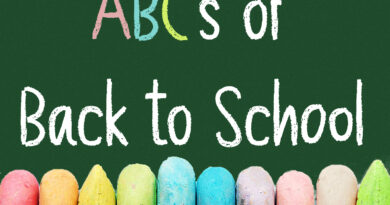Help Students Fall in Love with Reading
By JOHNA UNDERWOOD
 Valentine’s Day is upon us, and spring will soon be in the air. It is definitely the season for new love. What better time for students to fall in love with a new book? But, as with all new relationships, finding a book that sparks a student’s interest can sometimes feel … complicated.
Valentine’s Day is upon us, and spring will soon be in the air. It is definitely the season for new love. What better time for students to fall in love with a new book? But, as with all new relationships, finding a book that sparks a student’s interest can sometimes feel … complicated.
Because students are often assigned reading for purposes other than enjoyment, they may believe that reading for fun is just not for them.
Whether students have become reluctant readers or just want to explore new writers or genres, here are a few ways to help students fall in love with a new book.
First, help students get to know the “dating scene,” also known as the library or bookstore. Many students are unfamiliar with the wide variety of reading available. Both public and school libraries are great resources for trying new books without the commitment of buying them. If checking out a public library, students may benefit from a brief tour in order to explore a wider variety of genres. Even exploring a new section in their school or classroom library can show them there are many fish in the sea of reading (including lots of books about fish in the sea).
Once students are familiar with the variety available, encourage them to “flirt” with a few different genres. Ask your student to consider what they have read or watched previously that they enjoyed, and what topics they might like to learn about. Students can make lists of genres or topics to explore. That favorite show or movie might even be based on a book. Students can record their reading preferences and keep an ongoing list of what they might like to read next on a variety of apps, online sites, or a simple piece of paper.
After students have settled on a few genres to explore, it’s time for “speed dating.” Your reader should pick a handful of books that have potential, look at titles, and read any information about the book on the back cover or inside flaps. Then, they should take a few minutes to read the first few paragraphs or pages, depending on the size of the book and the student’s age. Your reader should be checking for a few things during this “speed dating session.” Does the book seem to fit into the topic or category they were really wanting to read? Does the book seem interesting (at least so far)? And is it near the student’s “just right” reading level? This “just right” level is a book that is not too hard and not too easy. Students will likely not stick with a book if they are struggling to read the words or understand the content. Additionally, they may lose interest if the subject matter or sentences are too simplistic. Students might need several rounds of speed dating before they choose a few books in which to invest more time.
Hopefully by this point, your reader will have chosen one or two books to “take out and get to know.” As with any good relationship, getting to know a book takes time. Families and children’s lives are often very busy, and even the most excited reader can struggle to stay with a book if they are not making time to read. Fortunately, because this is reading for enjoyment, and not an assignment, students could read before bed, in the car between school and other activities, or in their free time as an alternative to TV, games, or cellphones. Reading for enjoyment can also easily involve technology. Audiobooks, Kindle and electronic books checked out and read through library apps and online services may provide a simpler, more accessible option for reading.
Finally, encourage your student to talk about their reading: what is happening in the story, what they are learning as they read, and what they like and dislike about the books they chose. These conversations can help students continue to discover new reading preferences leading to new exciting book relationships in the future.
Whatever books your reader decides to explore, a love for reading is a relationship that is well worth the investment.
Johna Underwood teaches English at Gatesville High School.


